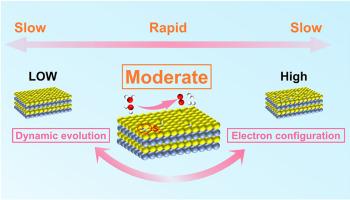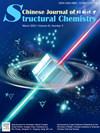Dynamic tuning of d-p orbital hybridization during sulfur vacancy evolution in Co9S8 toward efficient overall water splitting
IF 10.3
4区 化学
Q1 CHEMISTRY, INORGANIC & NUCLEAR
引用次数: 0
Abstract
Defect engineering significantly enhances electrocatalytic performance by modulating electronic structures and interfacial coordination, yet the dynamic correlation between defect evolution and catalytic activity during reactions remains unclear. Herein, density functional theory (DFT) calculations first reveal the modulation of sulfur vacancy concentrations on Co9S8 electronic structures, predicting that optimized vacancy concentrations enable highly efficient electrocatalytic water splitting. Experimentally fabricated Co9S8 with appropriate sulfur vacancies exhibits superior bifunctional activity (HER: 164 mV@η10; OER: 297 mV@η100). The MCS-assembled overall water splitting system demonstrates stable operation at 1.57 V (10 mA cm−2) for over 60 h. Experimental studies illustrate that sulfur vacancies preferentially adsorb OH− during reactions, inducing the formation of CoOOH active phases. DFT analysis further indicates that OH− adsorption weakens d-p orbital hybridization, optimizing hydrogen/oxygen intermediate adsorption energy barriers and ultimately enhancing catalytic performance. This work establishes novel paradigms for systematic development of catalysts through synergistic analysis of defect dynamics, electronic structures and catalytic performance.

Co9S8中硫空位演化过程中d-p轨道杂化的动态调谐
缺陷工程通过调节电子结构和界面配位显著提高电催化性能,但反应过程中缺陷演化与催化活性之间的动态关系尚不清楚。在此,密度泛函理论(DFT)计算首次揭示了硫空位浓度对Co9S8电子结构的调制,预测优化的空位浓度可以实现高效的电催化水分解。实验制备的具有适当硫空位的Co9S8具有优异的双功能活性(HER: 164 mV@η10; OER: 297 mV@η100)。mcs组装的整体水分解系统在1.57 V (10 mA cm−2)下稳定运行超过60小时。实验研究表明,硫空位在反应过程中优先吸附OH -,诱导CoOOH活性相的形成。DFT分析进一步表明,OH -吸附减弱了d-p轨道杂化,优化了氢/氧中间体吸附能垒,最终提高了催化性能。这项工作通过对缺陷动力学、电子结构和催化性能的协同分析,为催化剂的系统开发建立了新的范例。
本文章由计算机程序翻译,如有差异,请以英文原文为准。
求助全文
约1分钟内获得全文
求助全文
来源期刊

结构化学
化学-晶体学
CiteScore
4.70
自引率
22.70%
发文量
5334
审稿时长
13 days
期刊介绍:
Chinese Journal of Structural Chemistry “JIEGOU HUAXUE ”, an academic journal consisting of reviews, articles, communications and notes, provides a forum for the reporting and discussion of current novel research achievements in the fields of structural chemistry, crystallography, spectroscopy, quantum chemistry, pharmaceutical chemistry, biochemistry, material science, etc. Structural Chemistry has been indexed by SCI, CA, and some other prestigious publications.
 求助内容:
求助内容: 应助结果提醒方式:
应助结果提醒方式:


